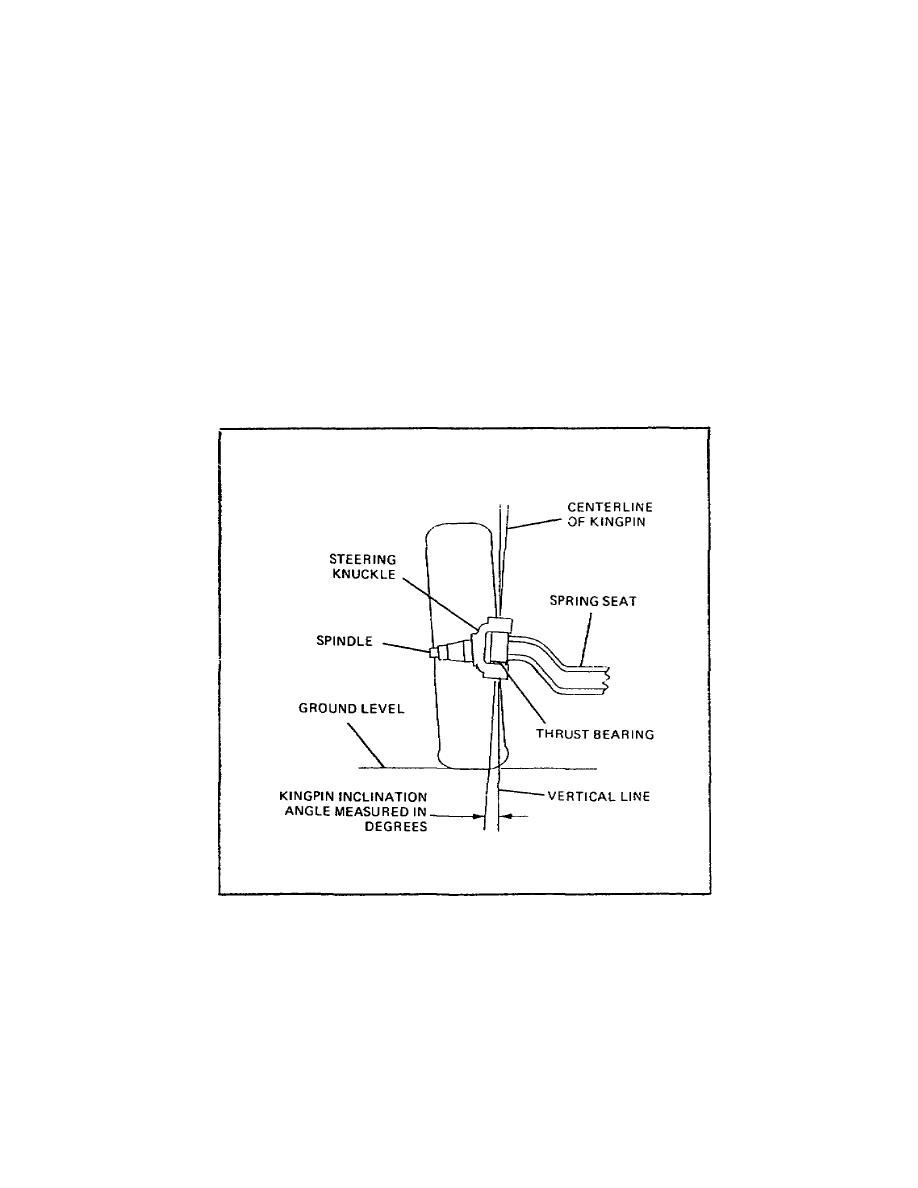
Lesson 1/Learning Event 2
Some camber is generally desirable, even with flat roads, because it moves
the point of contact between the tire and the road more directly under, and
closer to, the steering knuckle pivot. This makes the wheels easier to
pivot and reduces the amount of road shock that is sent to the vehicle
suspension and steering linkage when the wheels hit bumps. It also places
most of the load on the large inner wheel bearing.
The amount of camber must be carefully considered when designing a vehicle
to avoid some bad effects. If you ever rolled a tire by hand, you soon
learned that you did not have to turn the tire in order to turn a corner.
All you had to do was to tilt (camber) the tire to one side, and it rolled
around the corner like a cone. This is not desirable for the wheels of a
vehicle. The cone effect of positive camber tries to pivot the wheels out
on a vehicle.
FIGURE 11. KINGPIN INCLINATION.
Kingpin inclination
In addition to the caster tilt, the kingpin is also tilted inward at the
top. This inward tilt is called kingpin inclination. It is determined by
viewing the kingpin or pivot points from the front. Kingpin inclination is
another alignment factor that is
19



 Previous Page
Previous Page
